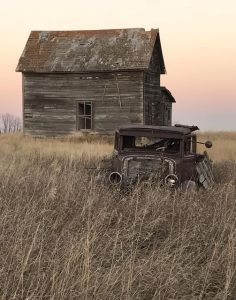Southern Saskatchewan CanadaSouthern Saskatchewan Canada
Southern Saskatchewan, located in the heart of Canada, is a region known for its vast prairies, striking natural beauty, and agricultural significance. The region encompasses a diverse range of landscapes, communities, and cultural histories, and it plays a crucial role in Canada’s economy. Here’s an in-depth look at Southern Saskatchewan, touching on its geography, economy, culture, and history.
Geography of Southern Saskatchewan
Landscape: Southern Saskatchewan is characterized by its expansive, flat prairies, rolling hills, and occasional river valleys. It is part of the broader Great Plains region of North America. The landscape is often described as “wide open spaces,” with far-reaching views of farmland, grasslands, and distant horizons.
Natural Features:
Grasslands: The region is predominantly covered in native prairie grasslands, including the fescue and mixed-grass prairies.
Rivers and Lakes: Major rivers such as the South Saskatchewan River and the Qu’Appelle River flow through the region, providing vital water resources. These rivers have created lush valleys in some areas, such as the Qu’Appelle Valley. There are also many small lakes and wetlands, which support both wildlife and human activity.
Sand Dunes: The region is home to the Great Sand Hills, an area of shifting sand dunes that is unique to the prairies and supports rare plant and animal species.
Climate: Southern Saskatchewan has a semi-arid climate, with hot summers and cold winters. Average summer temperatures can reach well into the 30s (Celsius), while winter temperatures often dip below -20°C in January. Precipitation is relatively low, making it ideal for agriculture but prone to droughts.
Economy of Southern Saskatchewan
Agriculture: Southern Saskatchewan is known as the “breadbasket of Canada” due to its vast agricultural output. The region is one of the world’s leading producers of wheat, barley, canola, and pulses. The fertile soil and flat land make it ideal for large-scale crop production.
Grain Production: Saskatchewan produces a significant portion of Canada’s wheat and canola. Farmers in the area also grow crops like lentils, peas, and flax.
Livestock: Livestock farming, including cattle ranching, is also prominent. Beef production is a key sector, and there are many ranches in the southern part of the province.
Mining and Resources: The southern region is home to significant mineral resources, particularly potash and uranium. Saskatchewan is one of the world’s largest producers of potash, and the province also has vast reserves of uranium, which are important for the nuclear energy sector.

Oil and Natural Gas: While not as prominent as in Alberta, oil extraction and natural gas production are important in certain parts of southern Saskatchewan, especially in areas like the Weyburn oil field.
Tourism: Tourism is growing, with visitors attracted to the region’s natural parks, outdoor recreation opportunities, and cultural festivals.
Culture and Communities
Indigenous Peoples: The Indigenous peoples of southern Saskatchewan include the Cree, Saulteaux, Assiniboine, and Dakota. These groups have a rich cultural history in the region, with many still residing on reserves or in nearby communities. Indigenous communities have faced challenges, but there are ongoing efforts toward cultural revitalization, education, and self-determination.
Settler Communities: European settlers, particularly from Ukraine, Scandinavia, and other parts of Europe, began arriving in large numbers in the late 19th and early 20th centuries, attracted by the promise of free land and the region’s agricultural potential. Many small towns and villages in southern Saskatchewan have strong ties to these immigrant communities, with churches, cultural organizations, and local festivals that celebrate their heritage.
Language and Religion: English is the predominant language spoken, but Ukrainian, French, and Indigenous languages can also be heard in certain communities. Religion plays a significant role, particularly Christianity, with many towns having a strong presence of Catholic, Protestant, and Ukrainian Orthodox congregations.
Small Towns and Cities: While much of the region is rural, there are several small cities and towns that serve as cultural and economic hubs. Some of the notable cities and towns include:
Regina: The capital city of Saskatchewan, located in the south-central part of the province. It is home to government offices, cultural institutions like the Royal Saskatchewan Museum, and the University of Regina.
Saskatoon: Although more northern, Saskatoon is another major city that influences the southern region. It’s an important hub for education, technology, and the arts.
Moose Jaw: Known for its historic architecture and role as a transportation hub, Moose Jaw is a city with rich history and a popular tourist destination.
Swift Current: A major center for agriculture in the southwest, Swift Current is a key service and trade center for the surrounding farming community.
Estevan: Estevan is a center for energy production, especially oil and natural gas, and has a strong connection to the coal mining industry.
History of Southern Saskatchewan
Indigenous History: Long before European settlers arrived, the region was inhabited by Indigenous peoples who lived off the land, hunting bison, and gathering plant life. These groups had rich spiritual and cultural traditions tied to the natural world. The arrival of European settlers brought significant changes, including the displacement of Indigenous peoples and the establishment of reserves.
The Canadian Pacific Railway: The arrival of the Canadian Pacific Railway (CPR) in the late 19th century spurred settlement and development in southern Saskatchewan. Homesteaders were offered land under the Homestead Act, which brought thousands of European immigrants to the region seeking a new life in the West.
The 1885 Rebellion: The Métis and some First Nations, including the Cree under Chief Big Bear, led a rebellion against the Canadian government in 1885. The conflict, which centered around issues like land rights and economic hardships, had a significant impact on the region’s development and the relationship between Indigenous peoples and the Canadian government.
The Dust Bowl and Depression: During the 1930s, Southern Saskatchewan was deeply affected by the Great Depression and the Dust Bowl. Drought, crop failure, and economic hardship devastated farms, leading to many people abandoning the region. However, the agricultural sector rebounded after the war, with improved farming techniques and government programs designed to support the industry.
Post-War Era: After World War II, Saskatchewan saw significant economic growth, driven by both agriculture and the rise of the resource sector. Potash and uranium mining emerged as key industries that reshaped the economy, attracting workers and investment.. Natural Parks and Recreation
Grasslands National Park: One of Canada’s lesser-known national parks, Grasslands National Park is located in the southwest of Saskatchewan and protects one of the last remaining tracts of pristine prairie in the country. It is a UNESCO World Heritage Site and is home to diverse wildlife, including bison, pronghorn antelope, and prairie dogs.
Qu’Appelle Valley: The Qu’Appelle Valley offers stunning scenery, with a series of lakes formed by glacial meltwater. It’s a popular area for boating, fishing, and hiking.
Cypress Hills Interprovincial Park: A striking area of forested hills that rises above the surrounding plains, offering hiking, camping, and wildlife viewing opportunities. It is shared with Alberta and is one of the most scenic areas in southern Saskatchewan.
Modern Challenges
Population Decline: While Saskatchewan has seen population growth in recent years, many rural communities continue to struggle with depopulation as younger generations move to larger cities for work and opportunities.
Economic Diversification: The economy of southern Saskatchewan is heavily reliant on agriculture and resource extraction. While these sectors remain strong, there is a push for diversification, particularly in areas like technology and education.
Indigenous Rights and Reconciliation: There is ongoing work toward reconciliation with Indigenous communities, addressing land rights, education, and economic disparity.
Conclusion:
Southern Saskatchewan is a region rich in natural beauty, cultural diversity, and historical significance. From its prairie landscapes and agricultural productivity to its vibrant small towns and Indigenous heritage, southern Saskatchewan continues to shape Canada’s identity. Despite challenges, the region remains an essential part of the nation’s economy and a testament to the resilience of its communities.
Related Posts
-
 The car in which Bonnie and Clyde took their final ride.
No Comments | Feb 10, 2025
The car in which Bonnie and Clyde took their final ride.
No Comments | Feb 10, 2025 -
 An abandoned Victorian home has been dramatically restored in Rarden, Ohio.
No Comments | Oct 4, 2024
An abandoned Victorian home has been dramatically restored in Rarden, Ohio.
No Comments | Oct 4, 2024 -
 Joachim Kroll Manor: The House of Shadows
No Comments | Oct 4, 2024
Joachim Kroll Manor: The House of Shadows
No Comments | Oct 4, 2024 -
 This home has 3 bedrooms and 2 full baths and is move in ready.
No Comments | Oct 5, 2024
This home has 3 bedrooms and 2 full baths and is move in ready.
No Comments | Oct 5, 2024